Many thanks to Eugene for the provided Kodak Professional DCS Pro 14n Digital Camera (Nikon F-mount).
In short
The Kodak Professional DCS PRO 14n is the world's second full-frame DSLR camera. The DCS PRO 14n is fully compatible with Nikon Nikkor lenses and Nikon D-TTL flashes, and other Nikon peripherals. DCS PRO 14n is based on the body of the Nikon F80 / N80 film camera.
In short, the DCS PRO 14n is an old, monstrous, slow professional camera, which is currently only interesting for its full-frame sensor without anti-moire filter and good color reproduction in good lighting conditions. It takes pictures of 4500 x 3000 pixels, which is approximately equal to 14 MP (perhaps this is why the name of the camera contains '14n'). Considered an iconic camera. The DCS PRO 14n has a lot of features that cannot be described in short.
History of full-frame Kodak CZK
Kodak has long been making sensors for digital backdrops. It was at Kodak headquarters that the first CCD sensor was developed. Kodak, before the release of DCS PRO 14n, already had experience in creating large sensors. So, in 2000, the KODAK PROFESSIONAL DCS Pro Back with the M11 sensor was already introduced, which could create images of 4080 x 4080 pixels, which is more than 16 MP. For that time it was just an incredible indicator.
With the release of the camera, a special 'PRO 14 Digital Camera Architecture' was introduced to create a versatile and easy-to-use full-frame camera.
The DCS PRO 14n is the first to use a 'CMOS' type sensor. Before that, all the matrices Kodak made itself and they were CCD-type. The new 'c14' die was manufactured by FillFactory.
As a result, several models of full-frame cameras were released:
I. Kodak DCS PRO 14n (Kodak Professional DCS PRO 14n Nikon F-mount)
Presented September 24, 2002 via Photokina. Matrix 'c14'. By the way, on the same day, Photokina was presented and Canon EOS-1DS. Inexplicably Canon EOS-1DS considered the second full-frame CDC, and the '14n' - the third, because they were presented on the same day. True, the camera did not go on sale soon. The '14n' body is from Nikon F80 (N80) film.
It was produced in three versions:
- Basic variant '14n', shown in this review. The very first and easiest.
- Extended version of '14n 512'. Since September 10, 2003, the '14n' can be upgraded with buffer memory, after which the memory has been expanded from 256 to 512 MB. This allowed at least shooting at ultra-low ISO in RAW + JPEG 13.5 MP and significantly increasing frame buffer. Since September 2003, all new 14n cameras have come with extended memory.
- Monochrome '14n m'. Instead of the usual color Bayer pattern, RGB was monochrome. This option immediately came with 512 MB of memory.
- Extended version '14n x'. Everything is more complicated here. It was possible to upgrade and replace the matrix in '14n' with a newer one, exactly the same as that of the subsequent model 'SLR / n'. As a result, there was no functional difference between '14nx' and 'SLR / n'. '14nx' and 'SLR / n' differed only in name and power management.
II. Kodak DCS Pro SLR / n (Kodak Professional DCS Pro SLR / n Nikon F-mount)
Introduced February 12, 2004. 512 MB buffer memory. New modified sensor 'x14' (with the same resolution). Nikon F80 body (same as '14n').
SLR / n was issued in two options:
- Basic variant 'SLR / n'.
- Monochrome 'SLR / n m'. Instead of the usual Bayer color paretern, RGB was monochrome.
III. Kodak DCS Pro SLR / c (Kodak Professional DCS Pro SLR / with Canon EF mount)
Presented March 18, 2004. 'x14' matrix. Produced in a single version. Sigma SD-9 body, Canon EF mount, SLR / n matrix, 512 MB memory. Yes exactly! This is a hybrid of the Sigma body, Canon mount under the Kodak brand! The Kodak DCS Pro SLR / c is Kodak's latest full-frame DSLR camera. All versions of the 'PRO SLR / n' and 'PRO SLR / c' cameras were discontinued simultaneously on May 31, 2005.
It's important: 'PRO SLR / n', 'PRO SLR / c' and 'PRO 14n x' cameras have the same sensor.
Upgrade
It's hard to believe, but at one time the Kodak DCS PRO 14n could be properly updated - for only 1800 USD. it could add twice as much buffer memory and install a new matrix from SLR / n. For less money, you could simply add memory. It sounds like a small thing, but the idea of a construction camera is very commendable.
Most likely, the idea of memory padding was conceived immediately with the release of 14n. When trying to shoot at ultra-low ISO, in RAW + JPEG format and an image size of 13.5 MP, the camera will tell you that it wants 512 MB of memory, which, as it were, hints at the possibility of an upgrade (display snapshot).
ISO
With ISO settings, there are subtleties. In general, for any image quality, you can only use the ISO range from 80 to 400 units, in increments of 1/3 stop. Thus, you can set the values of 80, 100, 125, 160, 200, 250, 320, 400 units.
ISO Features:
- ISO 500, 640, and 800 are available only with a thumbnail image. To be able to use high ISO values, you should select an image size in the 'RAW Resolution' setting of 6 or 3.4 MP. Also, you can use high ISO values in JPEG format, and you need to select the image size in the 'JPEG Resolution' setting equal to 6 or 3.4 or 0.8 megapixels. High ISO and RAW + JPEG can be used, but only if both are 6MP or smaller.
- For use over low ISOsuch as ISO 6, 12 and 25, use the 'Long Exposure' -> 'Longer' (display snapshot). In this case, with an ISO value of 25 units, you can shoot only at shutter speeds of 2, 4 or 8 seconds. At ISO 12, you can only shoot at 4, 8, or 15 seconds. At ISO 6 (six!), You can shoot only at shutter speeds of 8, 15 or 30 seconds. Important: It is best and most intuitive to use the 'S' or 'M' mode for shooting at ultra low ISO values. If you use the 'A' or 'P' shooting modes, you can get confused as shooting will still occur with the selected shutter speed and at the selected ISO value and it will not depend on what the metering data will show on the monochrome display.
- When you select an ISO value using the control dial and front selector, ISO 1250, 1600, 64, 50 values may be displayed on the monochrome display, which may be misleading about the presence of such values on the camera. After displaying this value, it changes to a maximum of 800 or a minimum of 80.
- If you try to select 500, 640 or 800 in the menu and use an image size of 13.5 MP, the ISO value will automatically be reset to 400 units.
- In the menu, you can select the level of noise reduction using the 'Noise Reduction' function. Three values are available: 'Weak', 'Normal', 'Strong'.
- When shooting in standard JPEG format, in EXIF ISO sensitivity data is recorded crookedly, so it’s not so easy to get it. This affected the fact that in the gallery of this review there is no accuracy in the ISO values.
- When shooting at extremely low ISO, the shutter does not behave as expected. For example, when shooting at ISO of 6 units, s shutter speed 30 seconds, the first 15 seconds the camera works with the mirror raised and the shutter closed, only then it opens the shutter and exposes the scene for the prescribed 30 seconds, after which the shutter closes and only after 15 seconds the mirror returns to its original position. Thus, the camera spends 15 + 30 + 15 = 60 seconds to shoot one frame. Most likely, this is done to subtract noise. At first, I couldn't even understand that it clicks several times in the middle of the camera, while shooting at long exposures. Most likely, this is done to 'calculate' hot pixels, the method is described here.
- No function auto ISO.
- When changing the ISO, the camera recalibrates for several seconds, and you cannot shoot.
As a result, the camera can only use the following ISO values: 6, 12, 25, 80, 100, 125, 160, 200, 250, 320, 400, 500, 640, 800.
Working capacity
DCS PRO 14n uses a set of shutter speeds from 30 seconds to 1/4000 seconds + excerpt by hand (absolutely useless due to the noisy matrix). ISO values are set in 1/3 steps, and excerpt, aperture and correction exposure only change in 1/2 steps, which is not entirely familiar.
The module is responsible for focusing. Multi-cam 900 with 5 points, the central of which is cruciform. The same module is used by cameras. D100, D70, D70s, D50, Fujifilm FinePix S2 Pro, Fujifilm FinePix S3 Pro, Fujifilm FinePix S3 Pro UVIR. Accuracy and tenacity of focus is not very happy, but you can get used to it.
Measurement exposure performed using simple 10 segment SPD sensor. The same simple measurer use cameras D100, Fujifilm FinePix S2 Pro, S3 Pro, S3 Pro UVIR. Despite the simple sensor, the DCS PRO 14n measures the exposure quite correctly.
Maximum burst speed is only 1.7 frames per second. By the way, Nikon D3x with maximum image quality (RAW with 14-bit color depth) can shoot on such pathetic 1.8 fps., and the legendary Fujifilm FinePix S5 Pro and even less - 1.5 fps.
Frame buffer The DCS PRO 14n can hold about 8 RAW or JPEG files at its maximum size. In RAW + JPEG (baseline) - 2 images, in RAW + JPEG (ERI) - 1 image (chickens laugh!). RAW files are in the range of 10 to 17 MB and are quickly written to the memory card.
DCS PRO 14n has two memory card slots CF and SD/MMC. SD/MMC cards are best used up to 4 GB.
The DCS PRO 14n uses a large viewfinder with 92% frame coverage. True, because of the protruding 2-inch display, leaning the camera to your face and sighting is not very convenient.
DCS PRO 14n turns on for 5 seconds. The batteries run out very quickly (on the review, of course, they were not new), on one of them I was able to shoot 30-40 photos, on the second about 200 photos.
The DCS PRO 14n uses a magnesium alloy body and weighs about 900 grams. There is an awkward grip for portraits. We can say that the combo-body of the camera is conditional, since there are no additional controls for vertical orientation, but there is only a shutter button. The camera got sick from Nikon - swelling nasty rubber bands on the grip.
Image quality
Frankly, the DCS PRO 14n nowadays produces poor image quality. But you can pull quite a lot from a 12-bit RAW file.
For many fans, DCS PRO 14n is the legendary camera that replaced the film, which is why you can find many very positive reviews about its color rendition, dynamic range, as well as many myths / facts about its super-unusual matrix with noise similar to film grain. The color of the camera is really good, but only in cases where there is good lighting. In artificial or poor lighting conditions, getting a good color with the DCS PRO 14n is very difficult.
Disadvantages of the image:
- A high noise level at ISO above 200. At ISO 400, the camera is already very noisy. Images at ISO 500, 640, 800 are generally disgusting to watch. I do not consider the high ISO noise of the DCS PRO 14n to be that which resembles film grain, or that which is pleasant to behold. In fact, for a more or less high-quality image, in the normal shooting mode, only ISO values of 80, 100, 125, 160, 200 can be used.
- Extremely loud noise at slow shutter speeds even at ISO 80. After taking a long shot shutter speed the camera warns that the recommended excerpt for such an ISO (display snapshot) For example, dFor ISO 80, it is not advisable to exceed a shutter speed of 1/3 second! ISO 80 s shutter speed more than 1 second noise like a steam locomotive (example with a shutter speed of 10 seconds in normal lighting and disabled function 'Long Exposure '). For exposures from 1/8 to 1 second, it is recommended to enable 'Long Exposure' - 'Long' (display snapshot). For very long exposures it is recommended to use the corresponding 'Long Exposure' - 'Longer' function. At slow shutter speeds, when shooting in RAW + JPEG format, the camera simply turns off JPEG and records only one RAW file.
- Strong sensitivity to moire. Due to the lack of an AA filter, getting a strong moire is very easy. Moire example.
- Poor on-camera JPEG (in standard mode) with a small number of settings. You can only adjust the level of sharpness, noise reduction, image size and select the image style (Wedding, Portrait, etc.). You cannot completely disable the noise reduction function. The image obtained by converting a RAW file can be several times greater than the camera JPEG.
Advantages of the image
- Sharp, detailed picture due to the lack of an AA filter. Where else can I get a 14MP full frame without an AA filter? Nikon started shooting the AA filter starting with 36 MP cameras, and Canon with 50 MP cameras. You can also look for information about a special infrared filter and microlenses for photodiodes.
- Nice color rendering in good light.
- More or less flexible 12-bit RAW (lossless compression used?). Can stretch up to 2 stops exposure.
- The ability (theoretically) to obtain an image at ultra-low ISO values, which can remove the disadvantages of neutral filters during certain types of shooting.
- Lack of micro lenses on subpixels matrices (is this even possible?), which theoretically allows you to get rid of additional vignetting during shooting on ultra wide-angle optics.
- The image behaves well in the lights.
Examples
All photos taken using a lens Nikon 50 / 1.4G.
ISO 500-800, camera JPEG:
High ISO source files can be downloaded here. RAW + JPEG source files can be downloaded here. Additional files only in RAW format (DCR) can be downloaded here.
My experience
In fact, shooting with the Kodak 14n is very easy, Anonymous from comments. It's just like riding a bike that burns. And you burn, and everything burns, and you are in hell.
The DCS PRO 14n is not a single bit balanced and very specific camera. I would only recommend it to people who are well versed in the technical aspects of shooting and processing. The DCS PRO 14n will take a lot of time to learn about its behavior and how to handle RAW files. This is not a camera that will immediately give excellent results in on-camera JPEG.
If you really want an inexpensive full frame, then the Canon EOS 5D is a great solution. If you need an exclusive camera with good color without additional processing - Fujifilm S5 PRO or Fujifilm S3 PRO. However, I added DCS PRO 14n to my list legendary cameras.
Nevertheless, I hope that the modified SLR / n model will be better than 14n.
In comments Can I ask you a question on the topic and you will answer, and you can also express your opinion or describe your experience. Many little things for a photo can be found on AliExpress.
Results
Kodak Professional DCS PRO 14n - unusual a camera released at the dawn of full-frame digital cameras. If we discard the not-so-successful Contax N Digital, then Kodak Professional DCS PRO 14n, along with Canon EOS-1DSare pioneers in the world of classic full-frame CZK. They are 5-6 years ahead of Nikon and Sony. Most likely, something went wrong with the DCS PRO 14n and DCS PRO SLR / n, as they were the first and last full-frame cameras from Kodak.
The PRO 14n camera has a lot of shortcomings, it itself is one continuous flaw. Nowadays, it is very weak in terms of functionality. Perhaps in 2002 PRO 14n was a breakthrough camera with the largest number of megapixels on its board, but now 14 MP will not surprise anyone. Many users love it for its good color and detail. First of all, due to its color rendition, the camera is still the adored subject of many photographers and amateurs.
Material prepared Arkady Shapoval. Training/Consultations | Youtube | Facebook | Instagram | Twitter | Telegram

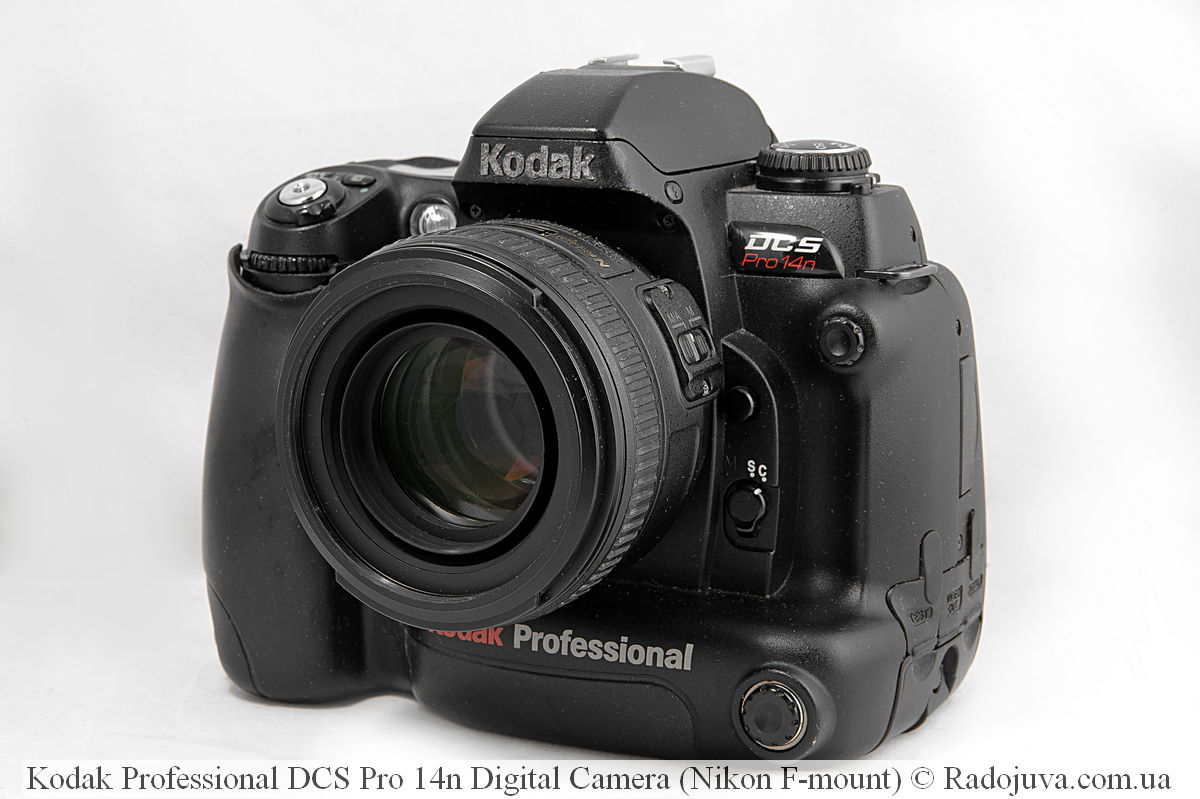
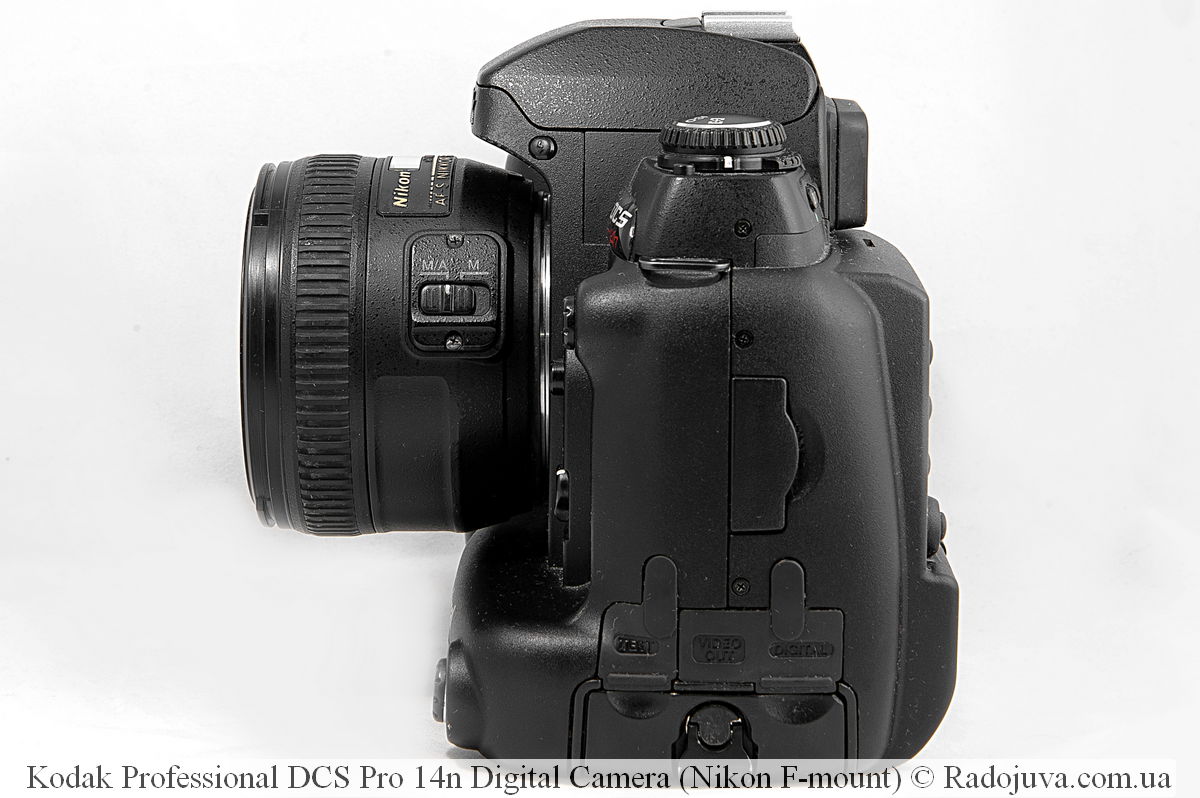
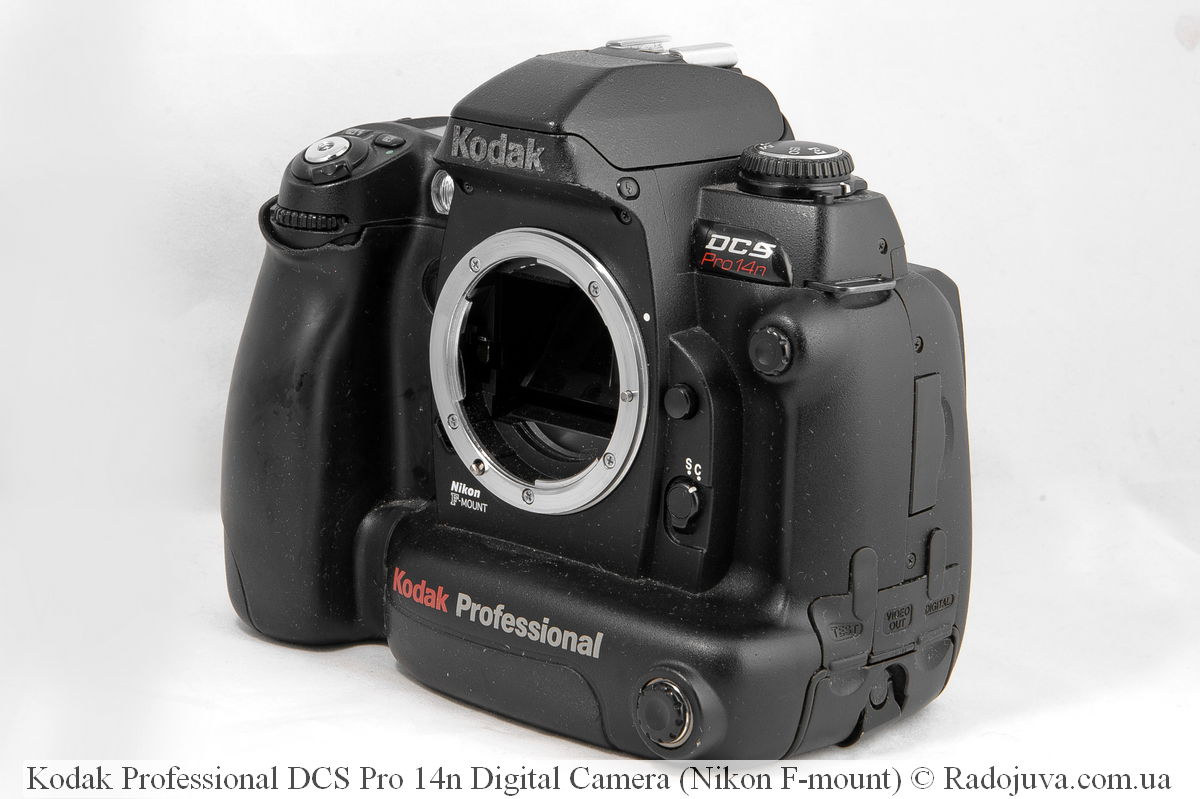
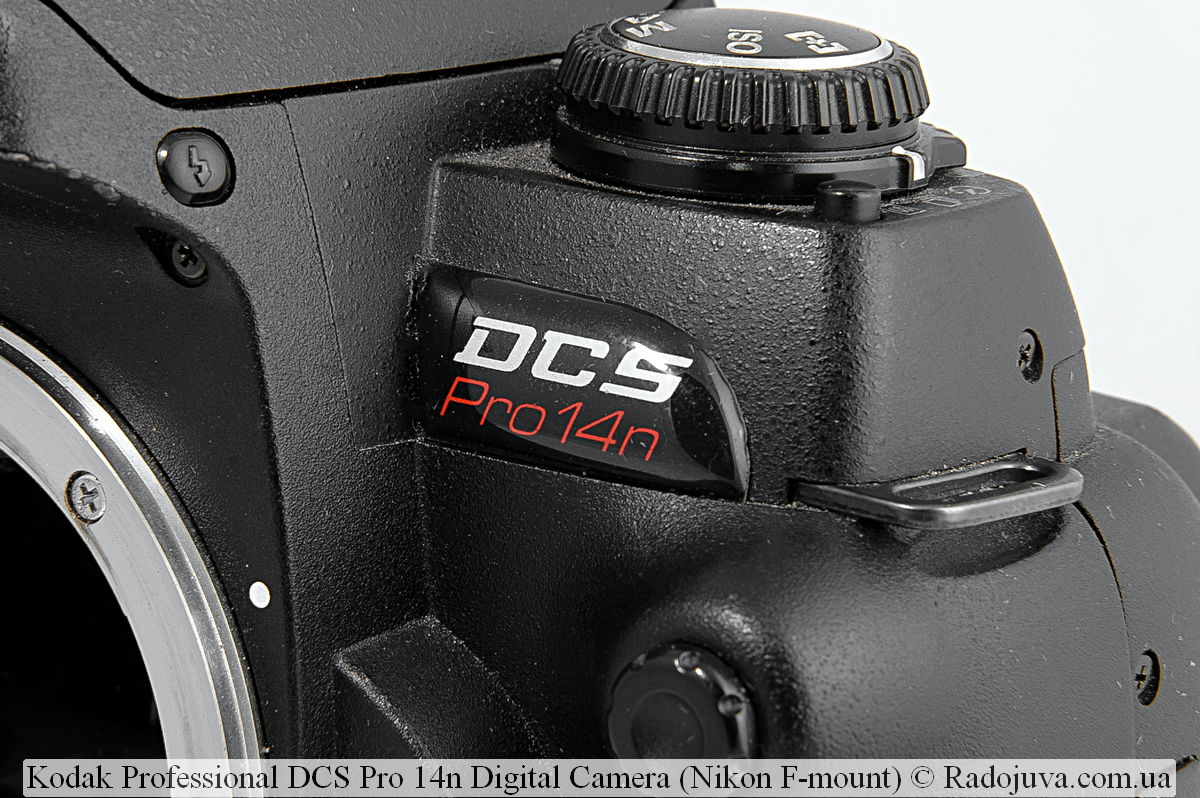
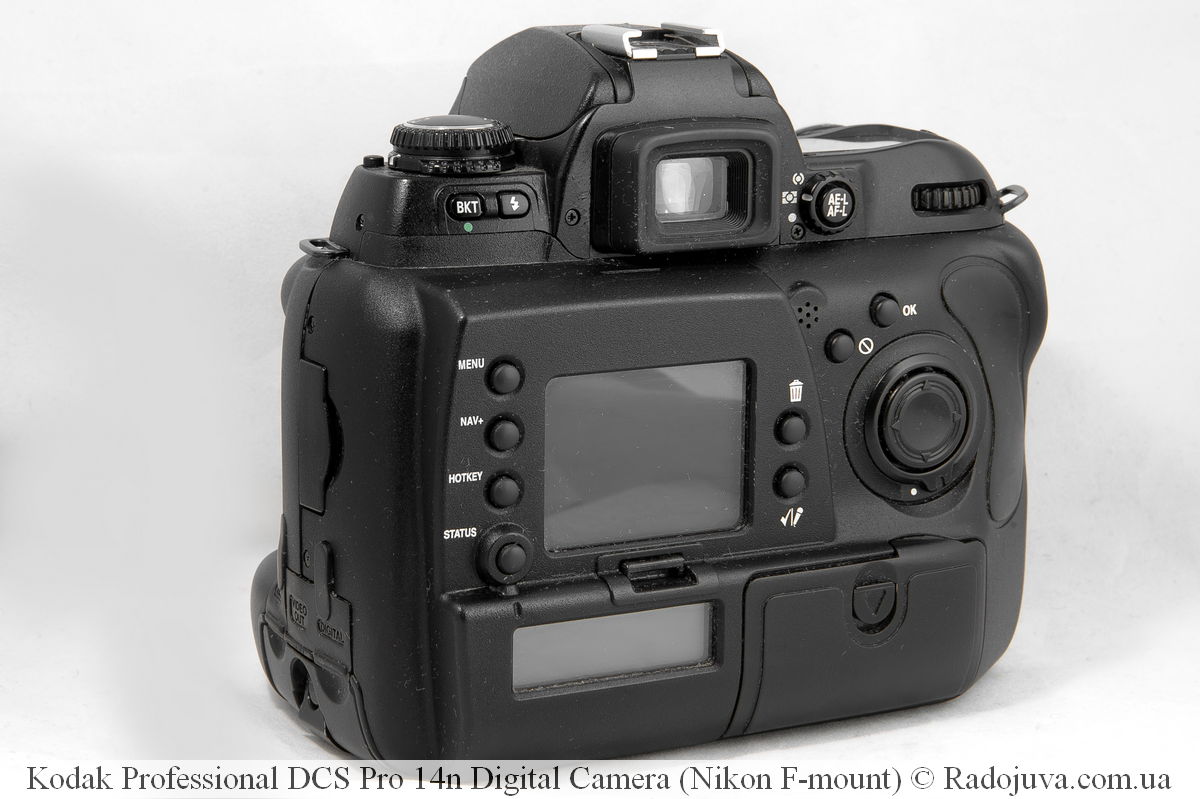
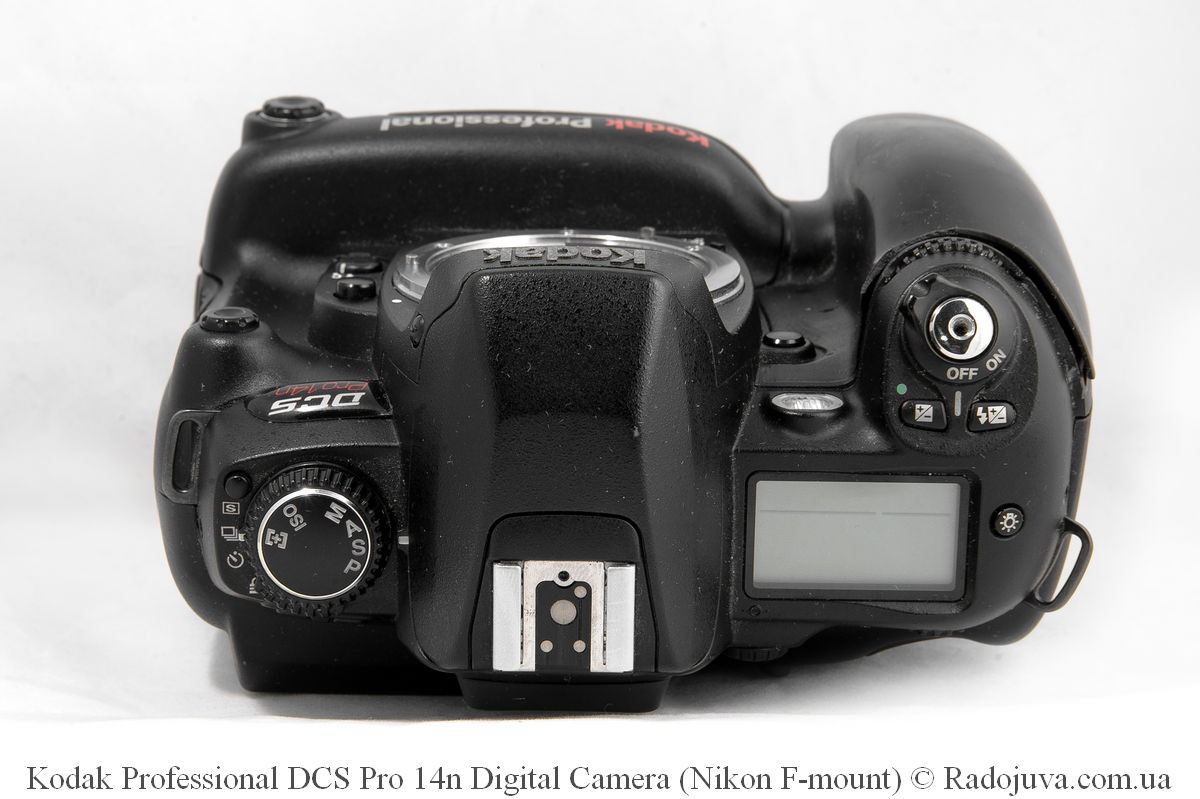
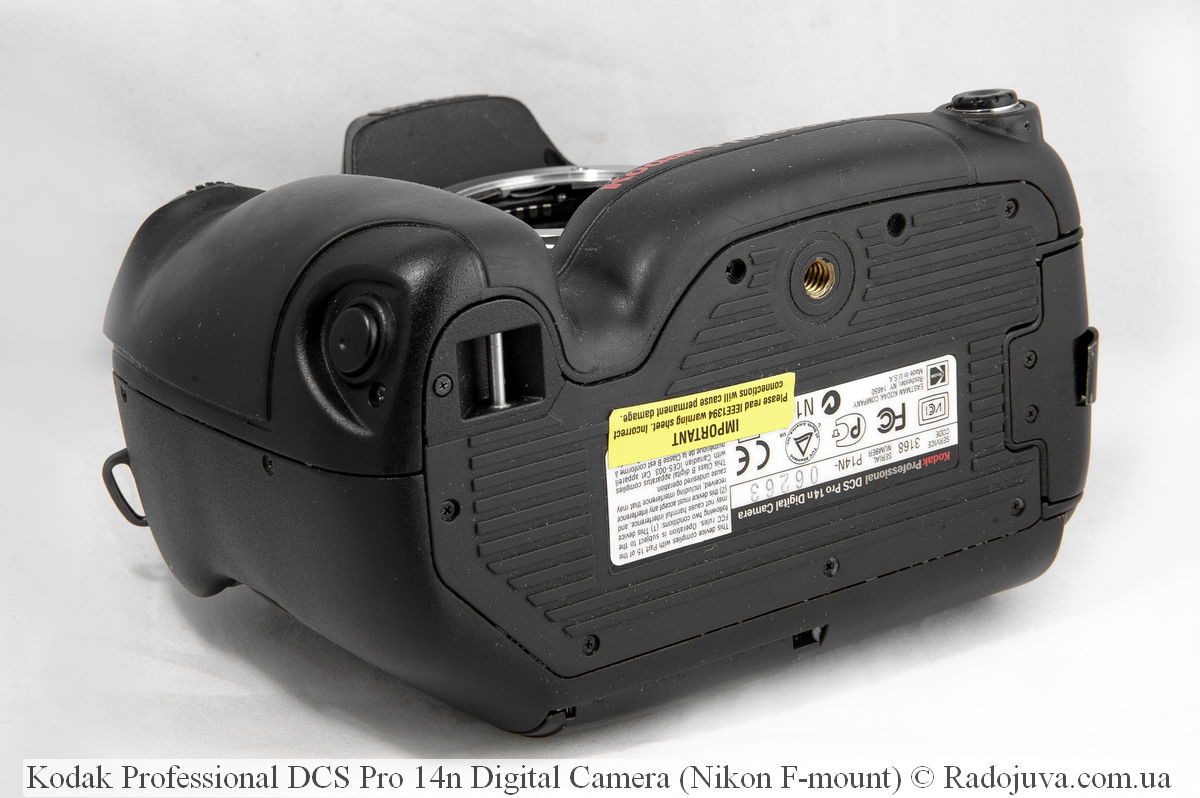

































































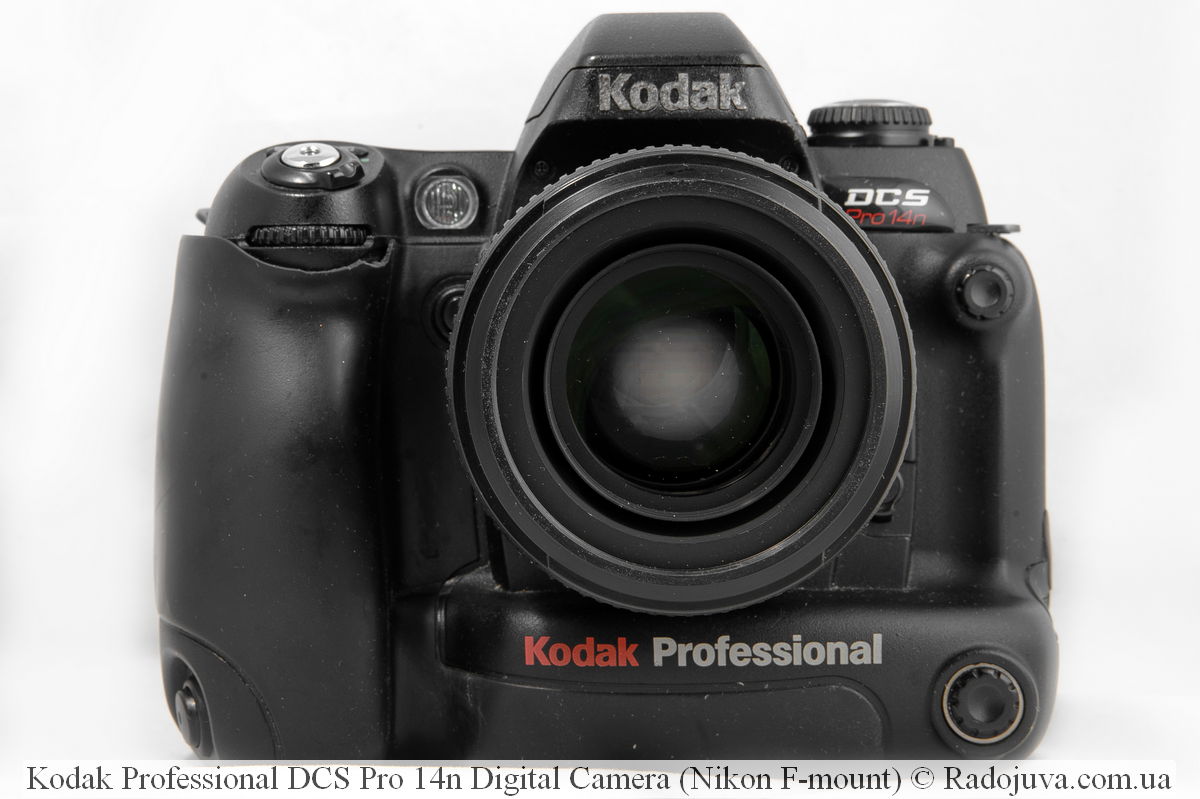

http://wowcamera.info/viewtopic.php?f=22&t=1484
True, the mileage is large
acquired, appreciated - liked it, bastard.
I also took it myself, only the later version of SLR / n. Happy as an elephant. When developing in your own photo board, you can get old-school film shades. More accurate colors can be obtained from C-1 with A. Titov's profile, having previously overtaken the native raves in DNG. I can't get enough of the color separation of this old camera: I compared it to Fuji and Nikon D40. Although it does not have an SSD matrix, I have never seen such clean skin tones.
Water for Elephants!
No, well, are you normal, anyway?
This is not the first time I've heard about C1 / S-1.
And what is this program (sorry for lamer)?
What is the name of? Is it suitable for Nikon's equals?
С-1 (Capture One Pro 10 v10.2.1.39) is a very correct program for processing RAVOK ...
http://nnm-club.name/forum/viewtopic.php?t=1180319
Would you prefer, say, Lightroom? Should you try out C1?
It's definitely worth a try. And preference is already personal)
Plus a lot. I’m perhaps so pleased with the work of C1 with this profile that I’m almost ready to take the hell out of a virtual machine with makosya, which I got for the sake of RPP for the codec.
One of the most successful and simple nmv options for processing raf files from these codecs is in ACR or LR using this profile: https://drive.google.com/file/d/0Bw2ZohnbXtyAUVI5RmFOTC1VNG8/view
Follow the link - the Kodak_SLR_dcp.zip file
inside Kodak_SLRn.dcp and Kodak_SLRn_Linear.dcp
put these two files in the ACR profiles folder
after that we restart Photoshop or Lightroom, open its editing, go to the Calibration Camera tab, in it we change the ACR 4.2 profile to Kodak_SLR ...
just kodak - standard profile
with _Linear - profile with a linear contrast curve
My photos in the above folder are taken on the first profile.
In my opinion, these profiles are suitable, only for the SLR version where there is a completely different matrix and several other filters. :-(
https://fotki.yandex.ru/users/ntg13/tags/kodak14nx?
bold colors
Examples of Kodak SLRn by lens: https://fotki.yandex.ru/users/rdgis/album/230308/
Fresh examples from this wonderful camera:
https://www.flickr.com/photos/_chrome_/albums/72157666697181127
Beautiful thank you.
It was nice to see :)
Hello. I am a professional artist, and the photo comes in parallel as an auxiliary tool for my profession. Kodak DCS Pro14n 14n came into playful pens. Could you give a reliable link to the Russian-language instruction manual? I would be very grateful to you.
He himself recently acquired this camera with a range of 28k, a whale lens, but without Akum for a ridiculous 3t.r. English only https://www.manualslib.com/manual/89197/Kodak-Dcs-Pro-14n.html and Spanish, but in general the manual is written clearly and it is not particularly difficult to understand the English version, it is also possible to translate pages through Yandex when viewing in a browser, it of course translates by machine, but it is easy to understand the meaning.
Vitaliy, for 3.000 (three thousand) rubles ?!
This is just an incredible price for this camera.
Here film F65, F75, F80 sometimes go for 6-7 thousand.
How did you know the mileage?
Yeah, for 3000 r, I was lucky, just a person took very bad pictures, didn’t write a camera model, couldn’t start it normally, because I couldn’t interest potential buyers, I had to solder the adapter to the battery from the airsoft drive, the battery fits into the case, the truth is that the wires stick out a little, and the battery compartment is not closed, but I did not find any native Akum, but it’s not critical. The mileage is easy to recognize. click on the menu item where the firmware version is, the bottom line is where the mileage is registered. while I deal with it, I shot only about 250 frames, but I’m very satisfied. Examples of pictures.
https://pp.userapi.com/c850728/v850728199/f7481/CC689i6mLm0.jpg https://pp.userapi.com/c851220/v851220666/beda4/cOO-sEyXbqU.jpg
https://pp.userapi.com/c847217/v847217825/1af715/Cw3YXTT_FfI.jpg
You are very lucky!
Have you tried to search for native batteries on ebay / amazon?
Tried it. Old stock, out of production. On Ali they are no longer there, on Injapan - 8000 rubles. on ebay about 1500-3000 + delivery https://www.ebay.com/itm/Rare-Lenmar-Digital-Camera-Battery-For-Kodak-DCS-Pro-14n-14nx-SLR-N/202610338914?hash=item2f2c846c62:g:SNgAAOSwUPpcd2A4.+ still charging. left so far as it is. maybe then I will order a native from the USA, though it will come out more expensive than the camera)))
… .Ravs from this camera are edited very easily, by the way this camera is intended for Ravs. And the color balance is the most correct of all modern cameras. There is no need to talk about speed at all. Kodak was made like a studio camera ... by the way it connects to a computer with a cord and the shooting is immediately visible on the screen ...
Arkady has no reviews on 5D_Mk2-3-4 /// 1D_Mk3-4 /// 1Ds_Mk2-3 yet.
I really hope that he will receive these cameras for testing in the next couple of years. Mb there is a good soul and will provide him with them for a test.
Arkady is very experienced, no need to accuse him of incompetence - for this is not true.
It just so happens that sometimes there is no strength, time and desire, and most importantly - the mood or mood to figure it out.
Kodak is clearly a difficult camera to master, it would be interesting to shoot at it.
A certain cult has formed around Kodak, a bit like the c3 and c5 pro cult. Members of such cults usually zealously, with ferocity can pursue certain goals of their own, as we see here - to present the camera to the sky, while not seeing the full picture as a whole and without the opportunity to recognize not only the strengths of their subject of adoration, but also its obvious and serious shortcomings. In the case of Kodak, this is very evident. Users fanatically believe in her color, while denying the fact that in many (many, many) situations, the color from her can be very controversial. At the same time, in order to justify the cult, at least in color, it may be imposed “Download the correct profiles to buy a good monitor”, etc. With the same thoughts with “good profiles” and perseverance, in a high degree of probability, you can get good results from many cameras. At the same time, the camera has obvious problems both in terms of functionality and image quality, which makes it a very specific tool.
It would be interesting if there was a review on Radozhiv on this camera from the reader and a life hack on working with it, as well as the reader’s experience that he could draw from it.
Description of the differences between DCS PRO 14n and DCS SLR / n:
https://www.imaging-resource.com/PRODS/SLRN/SLRNA.HTM
Better to take SLR / n.
Oh, yes, I’ve heard such statements more than once. For example, I will be glad if, for example, in this review you indicate what exactly you do not agree with?
Yes, Arkady, the people whom you write are you who this person is !!! because after your rave reviews I bought it. this is complete bullshit carcass crop with a fabulous color for sure. He took off and sold. With the codec is another matter! This camera is for a perfectionist. And you are a techie like ken rockwell. The camera is said to be for the soul and nerves, but the result is Amazing !!! And you do not shame, otherwise people will read about funge and your recommendations, and then they will look here. What will they think ?!
I'm not old Kenny, that's for sure :) you can write something under his review of the kodak, but most likely you will not succeed.
Once again, slowly and methodically, let's talk specifically about what exactly does not like in this review, what there are claims to. I am happy to revisit certain points. But so far, apart from exclamations, I could not understand anything from your remarks. With similar success, I can say that any camera is for a perfectionist if a decent shot has been taken from it at least once. Also, the transition to personalities when there is a discussion of the possibilities of technology is bad manners.
Also, if you really have something to share about Kodak, for example, examples of photos that will motivate users to use it, to engage in this camera, you can provide them. For them, I will make a signature that you are the author, post in the review, and also add any beautiful opus about the practice of using it. It will be a creative work worthy of true connoisseurs :)
OK. lay out. thanks
Well? And where will the promised "lay out"? Almost a year has passed
Probably, not all the bags turned over yet: D
And here is also a bunch of different rechargeable batteries / batteries, like other similar hybrids?
For shooting yards - this is it. yyyy
Oh, the owner changed the disease. Instead of photophilia, now audiophilia, and amazing color rendition and dense color turned into ringing high and rich bass. The meaning is about the same.
And the question asked remains unanswered - where is the photograph in all this? Now, if you put the same pictures next to another camera (and there is also some nice processing there) - would there be the same rave reviews? Patients with audiophilia show up on double-blind testing. Here, I suspect, will be the same.
The camera is a tool. The old camera is interesting in technology, possibly dead-end, possibly lost, the spirit of the times, a bunch of different things, just idle curiosity and a corresponding mindset. But to turn all this into an object of worship available only to the elite ... Absurdity.
Yes, it's fun to tinker with something like that. Realizing that you can shoot something no worse with old equipment than what was filmed when it was top. Masterpieces have always been created. But these “unhurried hikes” with filming of courtyards or clouds with some perverse joy of color rendering and skin tone ... There is something unhealthy in this.
Roman, if these are questions for me, then I will answer for myself. In addition to Nikonov, I own SD-1Merrill and Fuji s3 / s5 / (and x100t). These are cameras for the soul and for leisurely filming in fine weather. I have never worshiped this object. And I do not recommend buying these cameras in the absence of experience / desire to understand them. Arkady once long ago recommended not to get involved in the accumulation of “legendary” camera / lens models. Unfortunately, I can no longer stop. Motivated by interest and the desire to try an unusual / interesting thing.
I’ve been staring at Kodak for a long time, but if you take it, then for yourself SLR / n, maybe there are lenses for Nikon mount. So far it's no hurry.
If you are “running away” from old techniques, that's okay. Someone rushes from old cars, someone restores old radio tape recorders or televisions there - any hobby is commendable. Even if it is purely technical, I don’t know there, aesthetic is any understandable and healthy interest. There, someone is crazy about printing out a new 286 out of the box, lying around in a warehouse. But this person realizes that this is a fucking 286 and is not trying to prove to the whole world that everyone is idiots, and 286 is cool and couldn't be better.
An overview of the old Sigma, taking into account its advantages and disadvantages, a demonstration that you can shoot no worse or not much worse, these are the conditions, these are - this is great, I will read it with pleasure. Demonstration of frank, sorry, crap with a complete lack of understanding that this is crap (and poor Sigma has nothing to do with it), with d'Artagnan's conceit — this is ... well, I don’t know, this is the Dannig-Kruger effect.
Roman, I just have an interest in old technology. I am interested in studying the nuances of her work in practice.
Totally agree with you.
Paired photos without exifs instantly kill all legend, since in real blind testing 320 mbps mp3 files 99% of people on a regular smartphone are not able to distinguish from a flask on a high-res player.
Oh, and Michael pulled himself up. How familiar everything is.
Now tips about double-cropping about first-for-money or second nickel for deshman on Avito, about “no difference”, etc. etc. I do not want to waste time. It’s very convenient to shoot on d5100 / d90 or mikru, Sitting behind a 13 ”laptop with a TN matrix or a computer with the same monitor on which you cannot distinguish jpg from a 16-bit tiff or rav. Of course, if you listen to flac through the speakers of a laptop or plastic for 15ue, then it will not be distinguishable from 192kb mp3.
And so all life will pass. It's like wiping your ass with the newspaper Trud and Pravda or with normal toilet paper. And so it’s ok (with)
I suppose not Mikhail and I will not advise either crops or ff, the Pokemon, as always, is immersed in his fantasies and his problems. Interestingly, the Pokemon is able to not mention its wiping intimate places?
Roman correctly said everything, a technique is just a tool. Show the result, where the difference in the pictures will be clearly visible.
She is not there. Because Pokemon and fast flood.
Shoot whatever you want, kodak, kenon, nikon, wait for the crop or ff and sf - but show the result. It's simple.
And when will the anonym cease to be an anonym?
I do not mind, make a normal forum. It will be interesting that anonymous people remove and compare them with themselves, well, or vice versa. It is very convenient to hide under Anonymous and post nonsense.
About make forum this is not for me. This is more to Arkady. In Radozhiv, registration and prohibition of posting to anonymous people have long been necessary.
As I understand it, he does not need it. As well as to clean the blog from any heresy in the comments. Sometimes comments have directly opposite recommendations from his articles and nothing, everything is fine.
Freedom of expression is more important. Trolls come and go, good thoughts last forever. And I easily sweep away frank delirium. Someone wants to talk about old women - please
Wow, a rare beast 🙂 but this will be interesting only to collectors.
Although, if it cost 10 thousand, I would buy ...
My first and still the only CZ)
For everyone interested, there are a lot of examples from Kodak:
https://www.flickr.com/photos/_chrome_/albums/72157666697181127
Accidentally stumbled upon a review on a rare camera:
Overview of the (rare) Kodak DSC Pro SLR / c:
http://www.lux-et-color.ru/wordpress/?p=710
“The Kodak SLR / c is an enhanced Sigma SD-9 camera that:
the side panels are slightly changed (including the front false panel around the bayonet in the tidal region in the pentaprism - for the possibility of installing larger Canon optics such as 85 / 1.2L) and the Kodak digital filling with a unique firmware for the base "carcass".
shutter replaced (reliable and durable Copal delivered).
has its own autofocus module with 5 sensors (on the Sigma themselves - only one).
a unique focusing screen was installed in the full-frame field of view and the mechanics of mirror movement with modified dampers were improved ... "
The author adequately describes the camera and its pros / cons.
There is a problem of blade / peel off the sensor
Alignment of Kodak DCS SLR / n / c sensors:
It's no secret that the Kodak SLR / n or Kodak SLR / c cameras with all their well-deserved color advantages have a problem of the sensor falling off (!) Inside the camera.
Kodak used not the best glue, which is drying up and falling off. As a result, it is not possible to shoot further with the camera, because often the matrix inside changes its position, warps, and often dangles altogether.
This problem is successfully solved and the matrix can be set in the correct position along the plane and the distance relative to the mounting plate and fixed with a new good glue. And for both types of cameras. With dimensional control on a high-precision measuring bench.
Tell me where? Thanks. Kiev.
Please do. Kiev.
My phone, Viber 0635432641
https://www.facebook.com/%D0%A4%D0%BE%D1%82%D0%BE-%D1%80%D0%B5%D0%BC%D0%BE%D0%BD%D1%82-101962921433710/?modal=admin_todo_tour
Are there contacts of masters in the Russian Federation?
Infa from the owners of these cameras on club-nikon, photo_ru, and wowcamera:
1) The sensor falls off over time, this is an unpleasant feature of these cameras, the Kodak used poor glue, which eventually dried and crumbled.
The procedure itself is not cheap, it is almost impossible to do it yourself because of the nuances.
2) There are also problems with rubber bands, they swell like on Nikon from time to time (this applies only to models made on the basis of Nikon F80 film and does not apply to a camera made on the basis of
cameras from Sigma - Canon with DCS Pro SLR / s).
3) AF on DCS Pro SLR / n / DCS PRO 14n / DCS PRO 14nx - the screwdriver is slow and there are AF errors or AF not reaching the target (front focus).
However, but DCS Pro SLR / s is even worse, maybe there is a Sigma carcass with a Canon mount.
4) Incompatibility of some Canon lenses with DCS Pro SLR / s.
5) Working ISO - 160, it is unreasonable to raise higher as well as on Foveons and it makes no sense.
6) DD is worse or almost on par with Fuji S5Pro (Julia found out)
6) it is not even frail, if almost like S5
“1) Their sensor falls off over time” The procedure itself is cheap, you can do it yourself.
But with mold on the sensor, this is a problem. https://www.facebook.com/101962921433710/photos/pcb.119303659699636/119303466366322/?type=3&theater
DCS Pro SLR / n and DCS Pro SLR / c
Due to the fact that the camera actually has one working ISO - 160, with Kodaks as well as Sigmas on Foveon, it is advisable to combine high-aperture lenses or just good modern lenses with a stub.
One of the camera problems is Moire.
Kodaki categorically do not like cloudy weather and if you look at most of the photos from DCS Pro cameras, most of the photos were taken in sunny weather.
The owners of these cameras themselves write that JPG is terrible (by the way, as with all Sigma cameras on the Foveons).
Owners of Kodakov do not recommend buying a model from a review, also saw recommendations to generally avoid 14n / 14nx models.
The development of RAW from these cameras, as well as conversations, what is more correct and with what self-written amateur profile to “develop” RAW, does not remind of shamanism, but a fortune-telling session along with spiritualism and summoning spirits.
In fact, one working ISO is 160 for the SLR and for 14n the working ISO is 80
Spoon of honey in regards to the Kodak design: it turns out that the camera battery uses standard 103450 form factor batteries. Replacing them yourself is quite a feasible task. The long-running Kodak is definitely worth the trouble. See here https://www.dpreview.com/forums/post/59371576
(Well, or you can contact the master if you are not sure of the directness of your hands.)
Here I took here 4 pieces for $ 119 with delivery from the usa: https://www.ebay.com/itm/Kodak-DCS-Battery-for-PRO-14n-14nx-SLR-n-SLR-c-New-OEM-Battery/254087013018?hash=item3b28c4229a:g:sEwAAOSwP0RXh8YM&shqty=4&isGTR=1#shId
Who knows what the Kodak slr / n's guaranteed mileage is?
No camera has such a thing as “guaranteed mileage”
A kodak has an average of 50 ... 100k positives, and then how lucky.